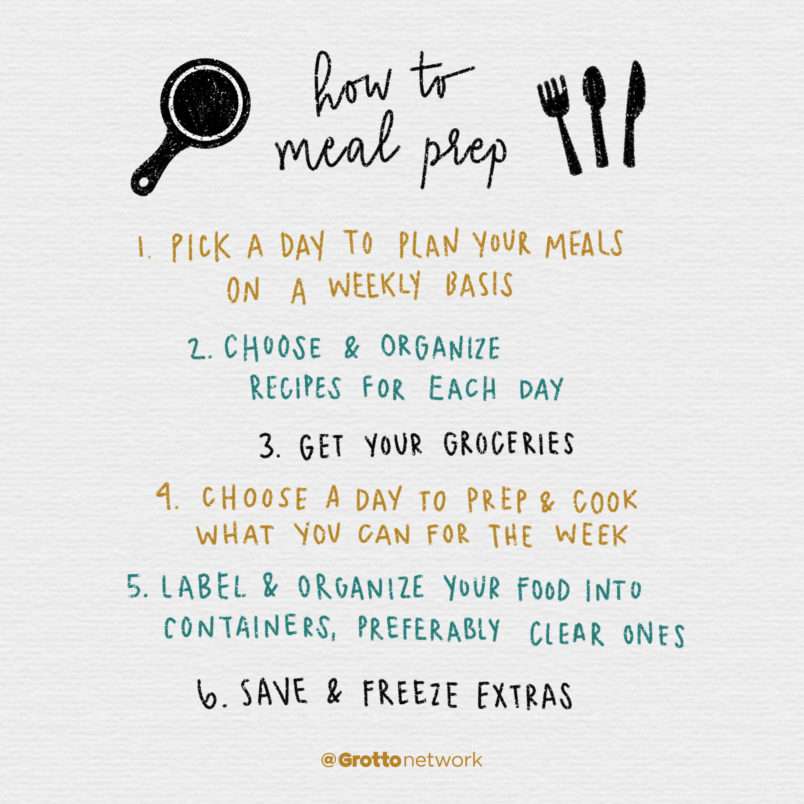Are you tired of constantly stressing over what to cook for dinner? Look no further! In this article, you will discover a multitude of great strategies for meal planning and prepping that will help you save time, reduce waste, and ensure that you always have delicious and nutritious meals ready to go. From creating a weekly meal schedule to batch cooking and freezer-friendly recipes, we’ve got you covered. Say goodbye to the last-minute scramble for dinner ideas and say hello to a more organized and efficient way of feeding yourself and your family. Let’s get started on your journey to stress-free meal planning and prepping!
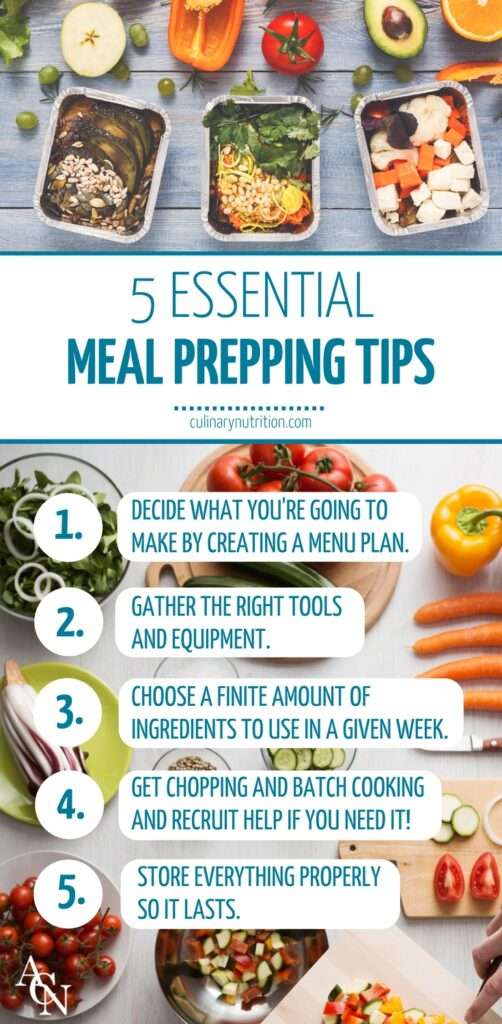
Creating a Weekly Meal Plan
Meal planning is a great way to stay organized, save time, and ensure that you have nutritious meals throughout the week. To create a successful weekly meal plan, it’s important to establish your goals and preferences, assess your schedule and resources, design a balanced and varied menu, utilize theme nights, and take inventory of your pantry and fridge.
Establishing Your Goals and Preferences
Before diving into meal planning, it’s essential to establish your goals and preferences. Consider factors such as your dietary needs, any specific health goals you might have, and the preferences of yourself and your family members. Are you looking to eat more vegetables, incorporate a specific cuisine, or focus on portion control? By identifying these goals and preferences, you can tailor your meal plan to suit your unique needs.
Assessing Your Schedule and Resources
Taking an honest look at your schedule and resources will help you determine the most efficient way to plan and prepare your meals. Consider how much time you have available for cooking each day, as well as any particular days when you might be busier than usual. Additionally, assess the resources at your disposal, such as kitchen appliances, cookware, and utensils. This will help you optimize your meal plan and ensure that it aligns with your schedule and resources.
Designing a Balanced and Varied Menu
A well-rounded meal plan should include a variety of nutrients from different food groups. Aim to incorporate fruits, vegetables, lean proteins, whole grains, and healthy fats into your menu. This not only ensures nutritional balance but also adds variety and excitement to your meals. Experiment with different recipes and ingredients to keep things interesting throughout the week.
Utilizing Theme Nights
Theme nights can be a fun and creative way to structure your weekly meal plan. For example, you can have “Meatless Monday,” “Taco Tuesday,” or “Italian Night” to guide your meal choices. Theme nights can help simplify meal planning by providing a framework for selecting recipes and choosing ingredients. They also add a sense of anticipation and make cooking and dining more enjoyable.
Taking Inventory of Your Pantry and Fridge
Before heading to the grocery store, it’s important to take inventory of your pantry and fridge. This step helps you identify what ingredients you already have on hand and what needs to be replenished. By using up items you already have, you can reduce food waste and save money. Taking inventory also allows you to plan meals around ingredients that are nearing their expiration dates, ensuring nothing goes to waste.
Efficient Grocery Shopping
Efficient grocery shopping plays a crucial role in successful meal planning and prep. By making a detailed shopping list, utilizing online grocery delivery or pickup, shopping in bulk, choosing fresh and seasonal ingredients, and incorporating leftovers and meal stretches, you can optimize your grocery shopping experience.
Making a Detailed Shopping List
A detailed shopping list is a game-changer when it comes to efficient grocery shopping. Take the time to plan your meals for the week and create a comprehensive list of all the ingredients you’ll need. Organize your list by sections to make navigating the grocery store easier and minimize the chances of forgetting essential items. A well-planned shopping list saves time, prevents impulse purchases, and ensures that you have everything you need for your meals.
Utilizing Online Grocery Delivery or Pickup
Online grocery delivery or pickup services have gained popularity in recent years, and for good reason. These services offer convenience and save valuable time by eliminating the need to navigate crowded grocery stores. Simply place your order online, choose a delivery or pickup time that works for you, and have your groceries delivered to your doorstep or ready for pickup. Online shopping also allows you to easily compare prices and find the best deals.
Shopping in Bulk and Taking Advantage of Sales
When possible, consider shopping in bulk for pantry staples and non-perishable items. Buying larger quantities can often be more cost-effective and reduce the need for frequent grocery store trips. Additionally, keep an eye out for sales and discounts on your usual grocery items. Planning your meals around sale items can save you money and add variety to your menu.
Choosing Fresh and Seasonal Ingredients
Opting for fresh and seasonal ingredients not only enhances the flavor and quality of your meals but can also save you money. Seasonal produce tends to be more affordable, as it doesn’t have to travel long distances to reach your grocery store. Fresh ingredients also provide a wider range of nutrients, contributing to a more well-rounded and nutritious meal plan. Visit your local farmer’s market for the freshest and most flavorful options.
Incorporating Leftovers and Meal Stretches
Don’t underestimate the power of leftovers and meal stretches when it comes to efficient meal planning. By intentionally cooking larger portions, you can repurpose leftovers into new meals or incorporate them into the next day’s lunch. For example, roast a whole chicken one night and turn the leftovers into chicken tacos or a hearty salad the next day. This not only saves time but also prevents food waste and maximizes the value of each ingredient.
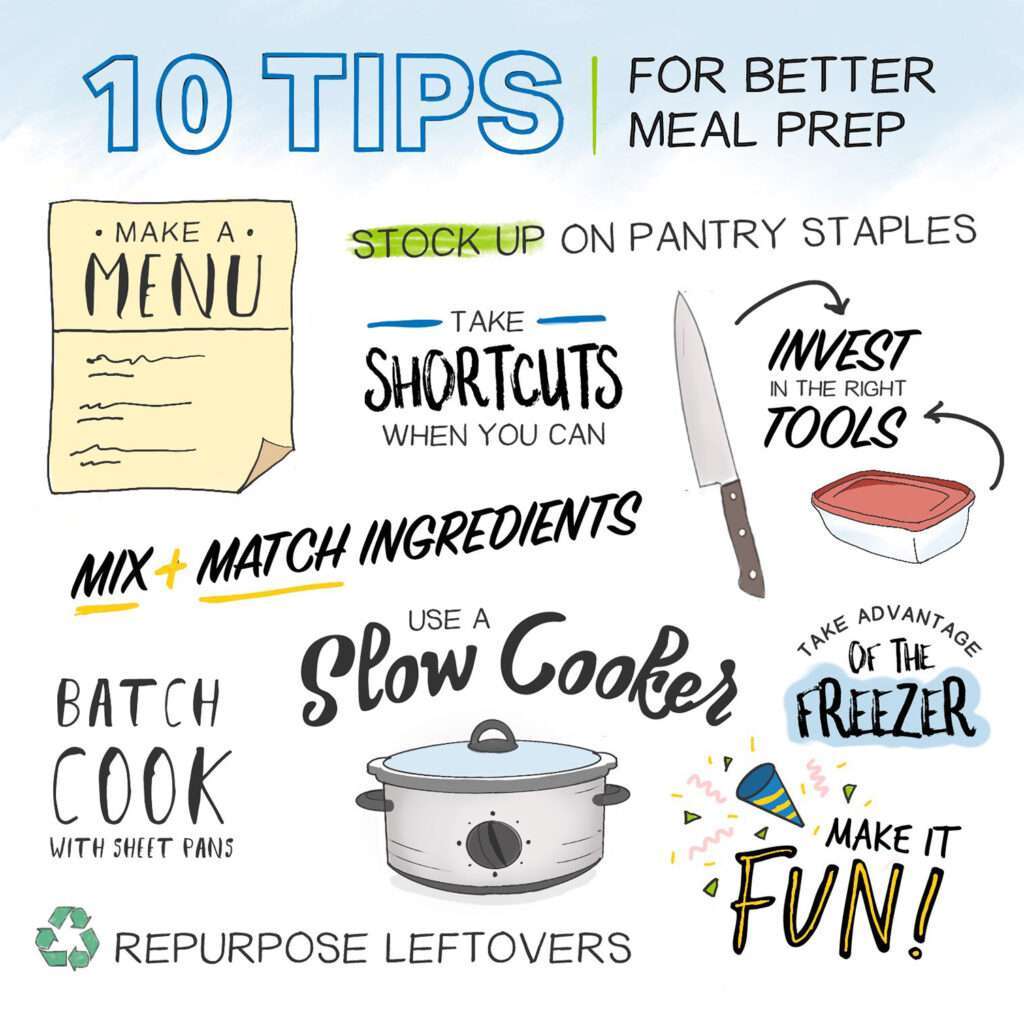
Preparing Meals in Advance
Preparing meals in advance is a time-saving strategy that can greatly simplify your week. Batch cooking and freezing, utilizing the slow cooker or Instant Pot, preparing meal kits or mason jar salads, portioning and packaging for grab-and-go, and setting up a meal prep assembly line are all techniques that can streamline your meal prep process.
Batch Cooking and Freezing
Batch cooking involves preparing a large quantity of food at once, which can then be divided into individual portions and stored in the freezer for future meals. This technique saves time and ensures that you always have homemade meals available, even on busy days. Some great options for batch cooking include soups, stews, casseroles, and chili. Invest in quality freezer-safe containers or resealable bags to keep your meals fresh and organized.
Utilizing the Slow Cooker or Instant Pot
The slow cooker and Instant Pot are invaluable tools for effortless meal preparation. These appliances allow you to cook meals with minimal hands-on time while still enjoying delicious, flavorful results. Simply add your ingredients, set the timer, and let the cooker do the work. The slow cooker is ideal for dishes like pulled pork, soups, and stews, while the Instant Pot excels at quickly cooking grains, beans, and even whole meals like pot roast or curry.
Preparing Meal Kits or Mason Jar Salads
Meal kits and mason jar salads are a fantastic way to streamline your meal prep and ensure that you have grab-and-go options. Meal kits involve prepping and packaging individual servings of a complete meal, making it easy for everyone in the family to quickly assemble their dish. Mason jar salads are a convenient and attractive way to store salads for the week, with the dressing at the bottom and the salad ingredients layered on top. When ready to eat, simply shake and enjoy!
Portioning and Packaging for Grab-and-Go
When preparing meals in advance, it’s essential to portion and package them for grab-and-go convenience. Invest in reusable or disposable containers that are the appropriate size for an individual serving. Portioning your meals ahead of time prevents overeating and ensures that you have a balanced meal ready to go. Label each container with the date and contents for easy identification.
Setting Up a Meal Prep Assembly Line
Creating a meal prep assembly line is an efficient technique that can significantly speed up your prep time. Start by organizing all your ingredients, tools, and containers in a clean and spacious workspace. Then, work methodically through each recipe or component, chopping, measuring, and assembling as you go. This streamlines the process and minimizes the time spent searching for ingredients or tools.
Efficient Meal Prepping Techniques
Efficient meal prepping involves optimizing various aspects of the preparation process to save time and effort. Techniques such as washing, chopping, and storing fresh produce, preparing ingredients for multiple recipes, marinating and pre-cooking protein sources, organizing ingredients for efficiency, and using time-saving kitchen tools and gadgets can all contribute to a more streamlined meal prep experience.
Washing, Chopping, and Storing Fresh Produce
Fresh produce is a key component of a healthy meal plan, but the prep work involved can be time-consuming. To optimize this process, set aside dedicated time for washing, chopping, and storing your fruits and vegetables at the beginning of the week. Consider investing in time-saving tools like a salad spinner, vegetable chopper, or food processor to expedite the process.
Preparing Ingredients for Multiple Recipes
Streamline your meal prep by preparing ingredients that can be used across multiple recipes. For example, if your meal plan calls for diced onions in a few different dishes, chop all the onions at once and store them in separate containers. This not only saves time but also reduces the number of tools and dishes needed throughout the week.
Marinating and Pre-Cooking Protein Sources
To expedite the cooking process, marinate and pre-cook protein sources in advance. For example, marinate chicken or tofu overnight to infuse it with flavor before grilling or baking. Pre-cooking proteins like chicken, ground beef, or beans saves time when assembling meals and ensures that they are cooked thoroughly and ready to eat.
Organizing Ingredients for Efficiency
Efficient organization is key to an effective meal prep routine. Keep your ingredients organized by grouping them according to recipe or category. For example, store all the ingredients for each meal together in the refrigerator or designate sections of your pantry for different types of ingredients. This prevents time wasted searching for specific items and allows you to quickly assemble your meals.
Using Time-saving Kitchen Tools and Gadgets
Incorporating time-saving kitchen tools and gadgets can greatly streamline your meal prep process. Invest in tools like a food processor, mandoline slicer, or spiralizer to cut down on labor-intensive tasks like chopping or slicing. Other gadgets like a garlic press, citrus juicer, or immersion blender can also save time and effort in the kitchen.
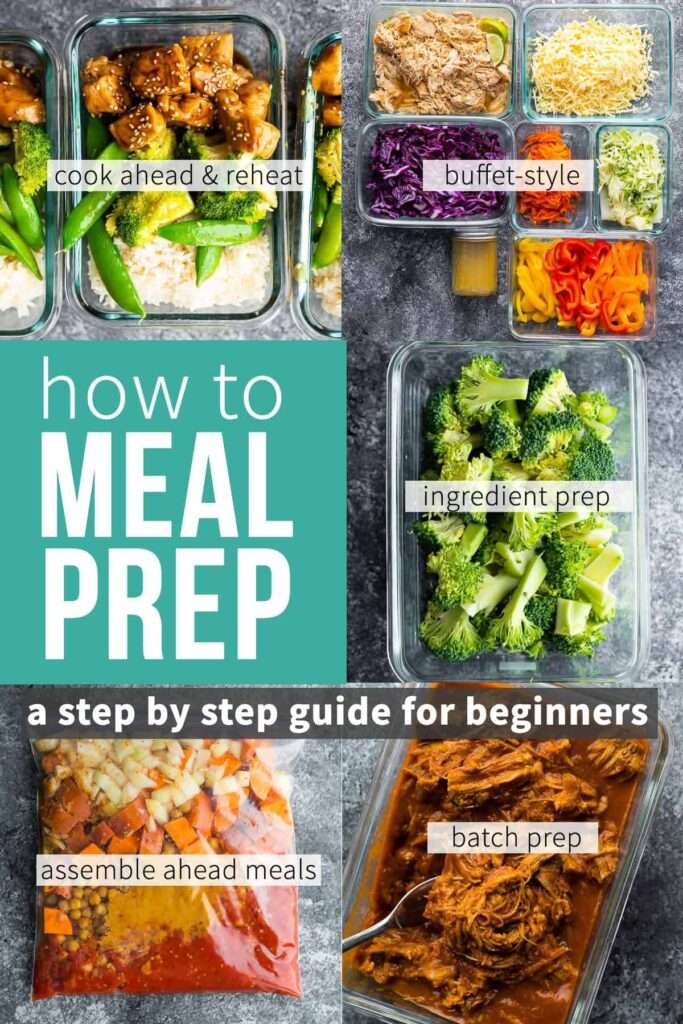
Incorporating Variety and Flexibility
To maintain a successful meal planning and prepping routine, it’s important to incorporate variety and flexibility into your meals. By incorporating different cuisines and flavors, adapting recipes to personal preferences, considering dietary restrictions and allergies, building in flexibility for real-time adaptations, and trying new recipes and food experiments, you’ll keep your meals exciting and enjoyable.
Incorporating Different Cuisines and Flavors
Elevate your meal plan by incorporating different cuisines and flavors into your repertoire. Experiment with recipes from around the world, such as Mexican, Thai, Indian, or Mediterranean dishes. Not only does this add variety to your meals, but it also introduces you to new ingredients and cooking techniques. Expand your culinary horizons and keep your taste buds excited.
Adapting Recipes to Personal Preferences
Meal planning and prepping should be flexible enough to accommodate personal preferences. If you have a particular aversion or allergies to certain ingredients, feel free to substitute or omit them in your recipes. Don’t be afraid to experiment and make adjustments to cater to your taste buds. Remember, meal planning is all about making it work for you and your unique needs.
Considering Dietary Restrictions and Allergies
If you or your family members have dietary restrictions or allergies, it’s crucial to take them into account when meal planning and prepping. Identify any specific restrictions and research suitable alternatives or modifications to ensure everyone can enjoy delicious and safe meals. There are numerous resources and recipe adaptations available online to help guide you through these considerations.
Building in Flexibility for Real-Time Adaptations
Life is full of surprises, and unexpected events or changes in schedule can disrupt even the most meticulous meal plans. To avoid feeling overwhelmed, build flexibility into your meal planning system. Include a couple of backup or pantry meals that can easily be whipped up with staple ingredients. This allows you to adapt to changing circumstances without sacrificing nutritious meals.
Trying New Recipes and Food Experiments
One of the joys of meal planning is the opportunity to explore and try new recipes and food experiments. Don’t be afraid to step outside your comfort zone and experiment with unfamiliar ingredients or cooking methods. Whether it’s attempting a new dish or adding a twist to a familiar recipe, embracing culinary adventures keeps meal planning exciting and helps you discover new favorites.
Optimizing Storage and Organization
Efficient storage and organization are essential aspects of successful meal planning and prepping. By choosing appropriate food storage containers, labeling and dating prepped meals, arranging your fridge and freezer efficiently, creating a space for meal prep tools, and establishing a rotation system for ingredients, you can optimize your storage and keep your kitchen tidy.
Choosing Appropriate Food Storage Containers
Investing in high-quality food storage containers is a wise decision when it comes to meal planning and prepping. Look for containers that are durable, leak-proof, and freezer-safe. Opt for a variety of sizes to accommodate different portion sizes and types of food. Clear containers are particularly useful, as they allow you to easily identify the contents without having to open them.
Labeling and Dating Prepped Meals
Prepping meals in advance often leads to a collection of containers in your fridge or freezer. To avoid confusion or wasted food, make sure to label and date each container. Use removable labels or write directly on the container with a dry-erase marker. This practice helps keep track of the freshness of your meals and allows you to quickly identify what you’re looking for.
Arranging Your Fridge and Freezer Efficiently
Efficiently organizing your fridge and freezer can save you time and prevent food waste. Designate specific areas for different categories of food, such as fruits, vegetables, proteins, and leftovers. Keep frequently used items at eye level and store less frequently used items on lower or higher shelves. Arrange your frozen meals and ingredients in a way that allows for easy accessibility and prevents items from getting buried and forgotten.
Creating a Space for Meal Prep Tools
Having a designated space for your meal prep tools and gadgets can streamline your preparation process. Dedicate a drawer, cupboard, or pantry shelf for items like cutting boards, knives, measuring cups, and other utensils you frequently use. Keeping these tools in one place ensures that you can easily grab everything you need when it’s time to cook.
Establishing a Rotation System for Ingredients
To prevent ingredients from going bad or being forgotten, establish a rotation system in your pantry and fridge. Arrange items so that older ingredients are used first, keeping newer purchases toward the back or bottom. This ensures that nothing gets wasted and that your ingredients are always fresh and ready to use.
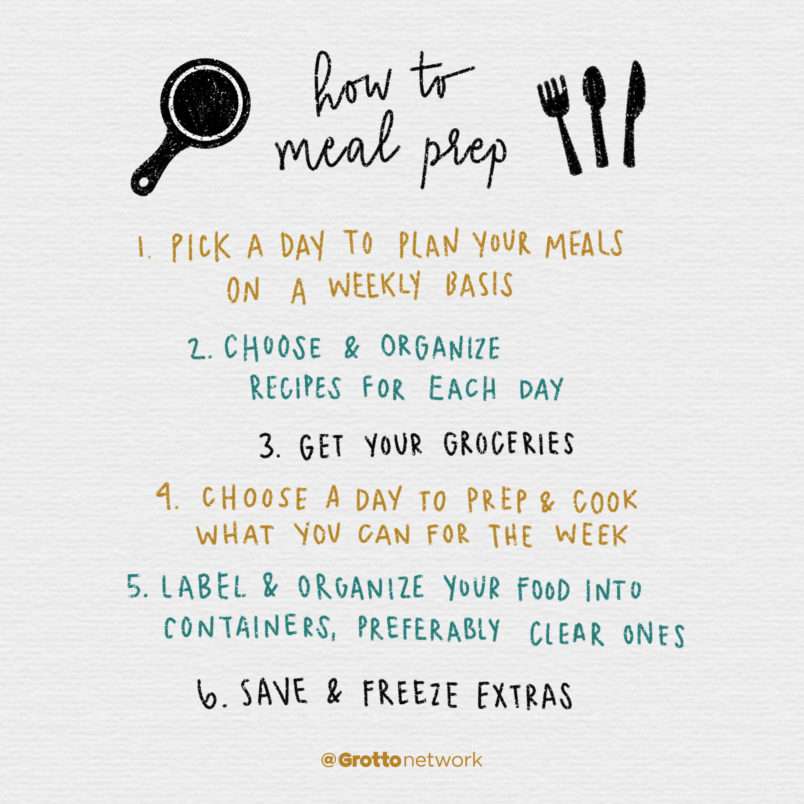
Streamlining Cleanup and Dishwashing
Efficient cleanup and dishwashing are key components of a successful meal planning and prepping routine. By cleaning as you go, using parchment paper and foil for easy cleanup, investing in dishwashing aids and time-saving tools, organizing your kitchen for efficient cleanup, and enlisting help and delegating tasks, you can streamline the post-meal clean-up process and save valuable time.
Cleaning as You Go
Cleaning as you go is a simple yet effective strategy for minimizing the mess and reducing the time spent on cleanup. While waiting for a pot to boil or a dish to bake, take a few minutes to wash and put away the utensils and cutting boards you’ve used. This prevents a pileup of dirty dishes and reduces the overall cleanup time once the meal is ready.
Using Parchment Paper and Foil for Easy Cleanup
To streamline cleanup, line baking sheets and pans with parchment paper or foil before cooking. These non-stick liners help prevent food from sticking to the surface and make cleanup a breeze. Once you’re finished cooking, simply remove the liner and discard it, eliminating the need for scrubbing and soaking.
Investing in Dishwashing Aids and Time-saving Tools
Investing in dishwashing aids and time-saving tools can greatly simplify the cleaning process. Consider using a dishwasher if you have one, as it can handle a large portion of your dishware and utensils. Additionally, look into tools like a dish rack with a built-in strainer for efficient drying, a quality sponge or scrub brush for effective cleaning, and a dish soap dispenser that dispenses the perfect amount with each use.
Organizing Your Kitchen for Efficient Cleanup
Organizing your kitchen in a way that facilitates efficient cleanup can make a world of difference. Group similar items together, such as placing all baking supplies in one drawer and all cooking utensils in another. Keep cleaning supplies easily accessible, so you can quickly wipe down countertops and surfaces as needed. A well-organized kitchen reduces the time and effort required for cleanup.
Enlisting Help and Delegating Tasks
Meal planning and prepping don’t have to be a solo endeavor. Enlisting help from family members or housemates not only lightens the workload but also encourages teamwork and fosters a sense of togetherness. Divide tasks among everyone involved, such as one person washing dishes, another chopping vegetables, and another wiping down surfaces. Delegating tasks ensures that everyone takes part in the process and makes cleaning up a more efficient and enjoyable experience.
Staying Motivated and Inspired
Staying motivated and inspired is crucial for the long-term success of your meal planning and prepping routine. By finding and following meal planning blogs or apps, joining meal prep communities or challenges, creating a reward system or incentive, making meal prep a social activity, and celebrating small victories and successes, you can maintain your enthusiasm and continue enjoying the benefits of meal planning.
Finding and Following Meal Planning Blogs or Apps
Meal planning blogs and apps are excellent sources of inspiration and guidance. Explore different platforms and find ones that resonate with your preferences and goals. Blogs often offer a wealth of recipe ideas, meal prep tips, and strategies for organizing your kitchen. Apps can provide customized meal plans, grocery lists, and even step-by-step cooking instructions.
Joining Meal Prep Communities or Challenges
Joining meal prep communities or challenges can provide a wonderful support network and help you stay motivated on your journey. Search for online communities, social media groups, or local meetups dedicated to meal planning and prepping. Share your successes, seek advice, and gain inspiration from others who are on a similar path. Participating in challenges can push you to try new recipes, experiment with different techniques, and keep meal planning exciting.
Creating a Reward System or Incentive
Creating a reward system or incentive can help you stay motivated and disciplined when it comes to meal planning and prepping. Establish tangible rewards for reaching certain milestones or adhering to your meal plan consistently. Treat yourself to something you enjoy, such as a new kitchen gadget, a spa day, or a night out with friends. The prospect of a reward can provide the extra push you need to stay committed to your routine.
Making Meal Prep a Social Activity
Meal planning and prepping doesn’t have to be a solitary experience. Make it a social activity by involving family members, friends, or roommates. Plan and cook meals together, sharing the workload and enjoying each other’s company. This not only lightens the load but also allows for quality time spent together. Socializing while prepping meals can make the process more enjoyable and create lasting memories.
Celebrating Small Victories and Successes
Don’t forget to celebrate the small victories and successes along your meal planning journey. Recognizing and acknowledging your achievements keeps you motivated and builds confidence in your ability to maintain the routine. Whether it’s trying a new recipe, sticking to your meal plan all week, or successfully incorporating a new cooking technique, take a moment to pat yourself on the back and revel in your progress.
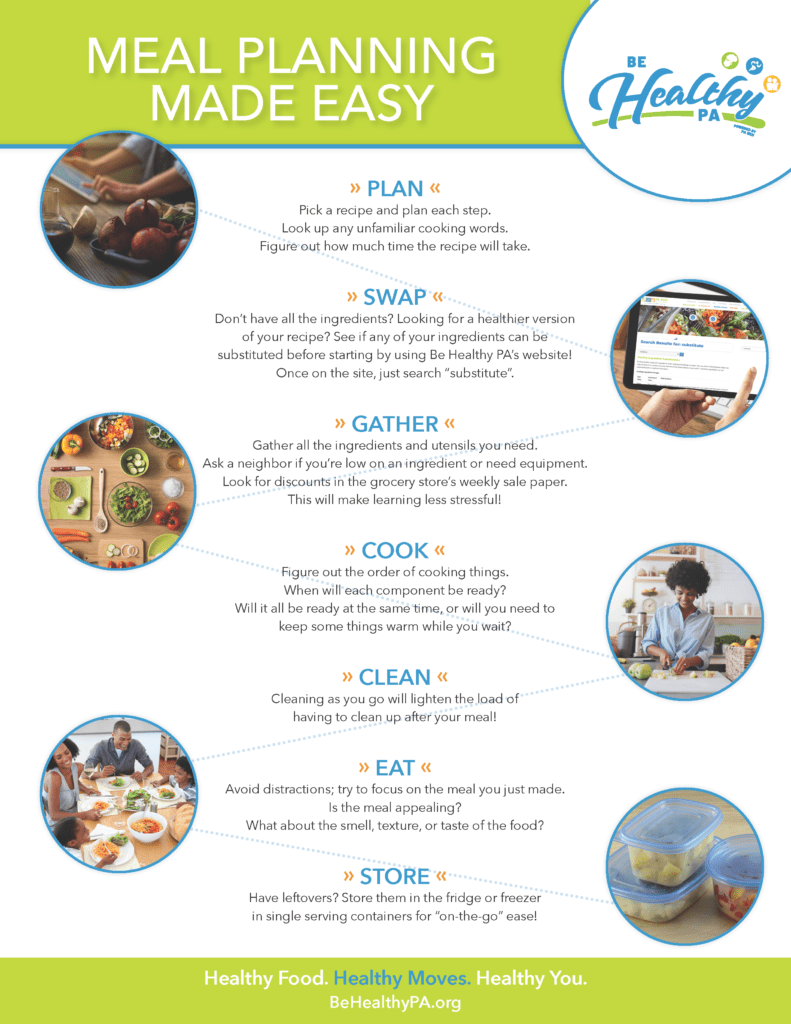
Overcoming Common Challenges
Meal planning and prepping may come with their fair share of challenges, but with the right strategies, they can be easily overcome. Dealing with limited kitchen space, managing time constraints and busy schedules, handling picky eaters and individual preferences, adjusting portions for single individuals or families, and adapting to unforeseen circumstances or changes are all common challenges that can be addressed effectively.
Dealing with Limited Kitchen Space
Having limited kitchen space can be a challenge, but it shouldn’t hinder your meal planning efforts. Maximize your available space by optimizing storage solutions, such as using stackable containers or utilizing vertical space with hanging racks or shelves. Consider investing in multi-functional kitchen tools that can save space, like collapsible measuring cups or cutting boards. Prioritize essential items and declutter regularly to ensure you’re making the most of your kitchen space.
Managing Time Constraints and Busy Schedules
Time constraints and busy schedules are common obstacles to successful meal planning and prepping. To overcome these challenges, make use of time-saving techniques like batch cooking, utilizing quick-cooking appliances like the Instant Pot, and incorporating leftover ingredients into new meals. Take advantage of weekends or days off to dedicate uninterrupted time to meal planning and prepping. Additionally, consider waking up a little earlier or prepping some ingredients the night before to minimize the amount of time spent in the kitchen during busy weekdays.
Handling Picky Eaters and Individual Preferences
Catering to picky eaters and individual preferences within your household requires tact and creativity. Involve everyone in the meal planning process, taking their preferences into account when choosing recipes. Offer a variety of options and encourage family members to try new foods. Make small adjustments to accommodate individual taste preferences, such as serving sauces and toppings on the side. Over time, exposure to different flavors and foods may help broaden their palates and reduce pickiness.
Adjusting Portions for Single Individuals or Families
Modifying portions to suit single individuals or families can be a challenge. When cooking for one, consider halving or doubling recipes as needed, or utilize freezer-friendly meal prep techniques to save leftovers for future meals. For families, adjust the quantities of ingredients accordingly, and opt for family-style meals that allow everyone to serve themselves. Invest in portion control tools like measuring cups or a kitchen scale to ensure balanced and appropriate portion sizes.
Adapting to Unforeseen Circumstances or Changes
Life is unpredictable, and unforeseen circumstances or changes can disrupt even the most well-planned meal prep routine. When faced with unexpected events or schedule changes, adaptability is key. Use backup or pantry meals you have on hand, rely on freezer meals, or consider quick and simple options like salads or sandwiches. Don’t stress if your meal plan is thrown off track; instead, embrace the opportunity to be flexible and make the best of the situation.
Evaluating and Adjusting Your Strategy
Regularly evaluating and adjusting your meal planning and prepping strategy is essential for its long-term success. Reflecting on what worked and what didn’t, seeking feedback and input from family or housemates, assessing the cost and time-saving benefits, experimenting with new techniques or recipes, and revising and fine-tuning your meal planning system are key steps in this ongoing process.
Reflecting on What Worked and What Didn’t
Take the time to reflect on your meal planning and prepping experiences regularly. Consider what worked well and what could be improved upon. Did your chosen recipes turn out as expected? Did your meal plan align with your goals and preferences? Were there any logistical issues or time constraints that affected the success of your routine? Use these reflections to make adjustments and optimize your approach going forward.
Seeking Feedback and Input from Family or Housemates
Feedback from family members or housemates is invaluable when fine-tuning your meal planning routine. Encourage open communication and ask for their thoughts on the meals you’ve prepared. What did they enjoy most? Were there any dishes that didn’t resonate with them? Which recipes or ingredients would they like to see more or less frequently? Incorporating input from others creates a sense of collaboration and ensures that everyone’s preferences are taken into account.
Assessing the Cost and Time-saving Benefits
Regularly assess the cost and time-saving benefits of your meal planning and prepping routine. Have you noticed savings on your grocery bill by planning ahead and avoiding impulsive purchases? How much time are you saving by prepping meals in advance or following a structured meal plan? Identifying these benefits helps reinforce your commitment and motivation to continue with your routine.
Experimenting with New Techniques or Recipes
Don’t be afraid to experiment and try new techniques or recipes as part of your meal planning and prep journey. Incorporate a new cooking method or challenge yourself to try a cuisine you’re less familiar with. This experimentation keeps things exciting and prevents monotony. Share your experiences and discoveries with others, and be open to incorporating successful experiments into your regular rotation.
Revising and Fine-tuning Your Meal Planning System
As you gain more experience with meal planning and prepping, you’ll have a better understanding of your needs and preferences. Continue to revise and fine-tune your meal planning system to optimize its effectiveness. This may involve adjusting the frequency of theme nights, altering the types of recipes you incorporate, or fine-tuning the amount of food you prepare each week. Be flexible and open to change as you continually optimize your routine.
By following these comprehensive strategies for meal planning and prepping, you’ll be well-equipped to save time, reduce stress, and enjoy healthy and delicious meals throughout the week. Remember, meal planning is a flexible process that can be tailored to your preferences and lifestyle. Find what works best for you and embrace the benefits of efficient meal planning and prepping.
